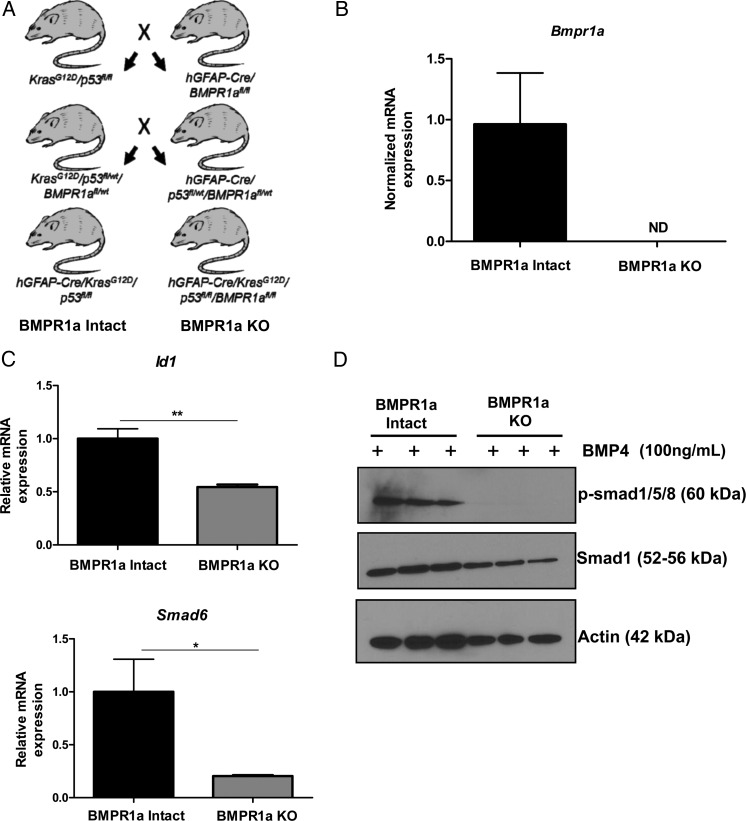Fig. 2.
Generation and characterization of transformed astrocytes with genetic loss of BMPR1a. (A) Breeding scheme used to generate mice with constitutively active Kras (KrasG12D) and homozygous deletion of p53 (p53fl/fl) with and without homozygous deletion of the type IA BMP receptor (Bmpr1afl/fl). Mice with oncogenic Kras and homozygous deletion of p53 are termed “BMPR1a-intact.” Mice with the addition of Bmpr1afl/fl are termed “BMPR1a-KO.” (B–D) Validation of BMPR1a KO. (B) mRNA expression of Bmpr1a in 3 BMPR1a-KO transformed astrocyte cell lines was not detected (ND). (C) The mRNA expression of the downstream signaling targets of the BMP pathway Id1 and Smad6 were significantly decreased in BMPR1a-KO transformed astrocytes compared with BMPR1a-intact transformed astrocytes in response to 24-hour BMP4 treatment (n = 3 per group). A 2-tailed Student t test was performed to compare the mean mRNA expression. Bars indicate SEM. *P < .05, **P < .01. mRNA is normalized to Gapdh levels and relative to BMPR1a-intact expression. (D) As shown by Western blot, BMPR1a-KO astrocytes do not phosphorylate Smads1/5/8 in response to BMP4 treatment (1 h) showing the absence of canonical BMP signaling.

